Spraying trees against fungal diseases and pests
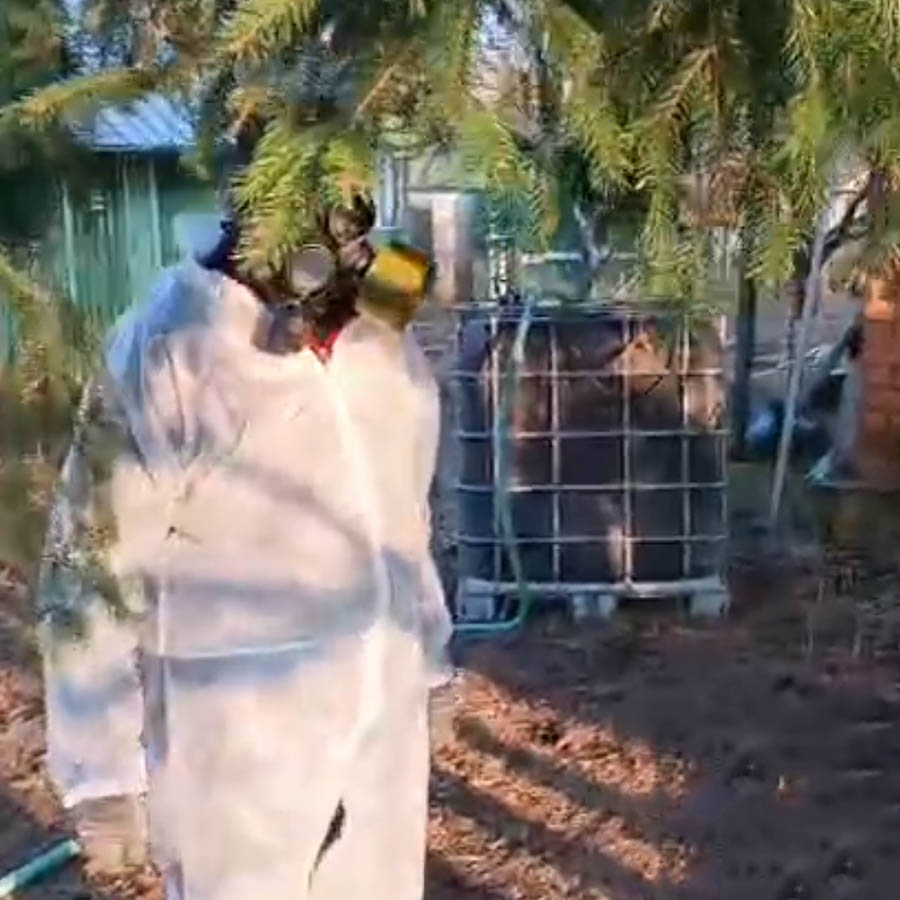
Spraying trees against fungal diseases and pests
Spraying trees against fungal diseases and pests
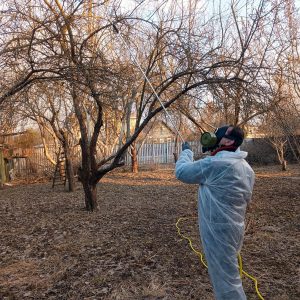
Comprehensive spring garden treatment is essential for a better harvest. Garden plant pests—fungi and insects—become active as air and soil temperatures rise when plants wake up in spring and the vegetation period begins. What work is needed in the garden in spring?
Order our garden treatment service. We provide pest protection—spraying, cleaning, pruning, and garden maintenance — early in spring and late in autumn. Cost starts from $350 per day plus a call-out fee of $60.
Next, spraying is done with a 1-2% copper sulfate solution. This is the simplest and most affordable fungicide. Copper compounds also affect pests, but this is not their primary action. Copper sulfate has an acidic environment due to hydrolysis, and high concentrations are harmful. The same applies to copper oxychloride. Sometimes, a weak solution of bleach is used in neglected gardens. The more gentle fungicide is a 1% Bordeaux mixture. It will eliminate pests and protect plants from fungal diseases.
Thus, the copper sulfate solution is more caustic but easily washed away by rain, while the Bordeaux mixture leaves low-solubility copper residues on plant tissues.
Garden processing in spring: order pruning, spraying against pests and fungal diseases. Cleaning garden trees and bushes from moss and lichen!

Spraying trees against fungal diseases and pests
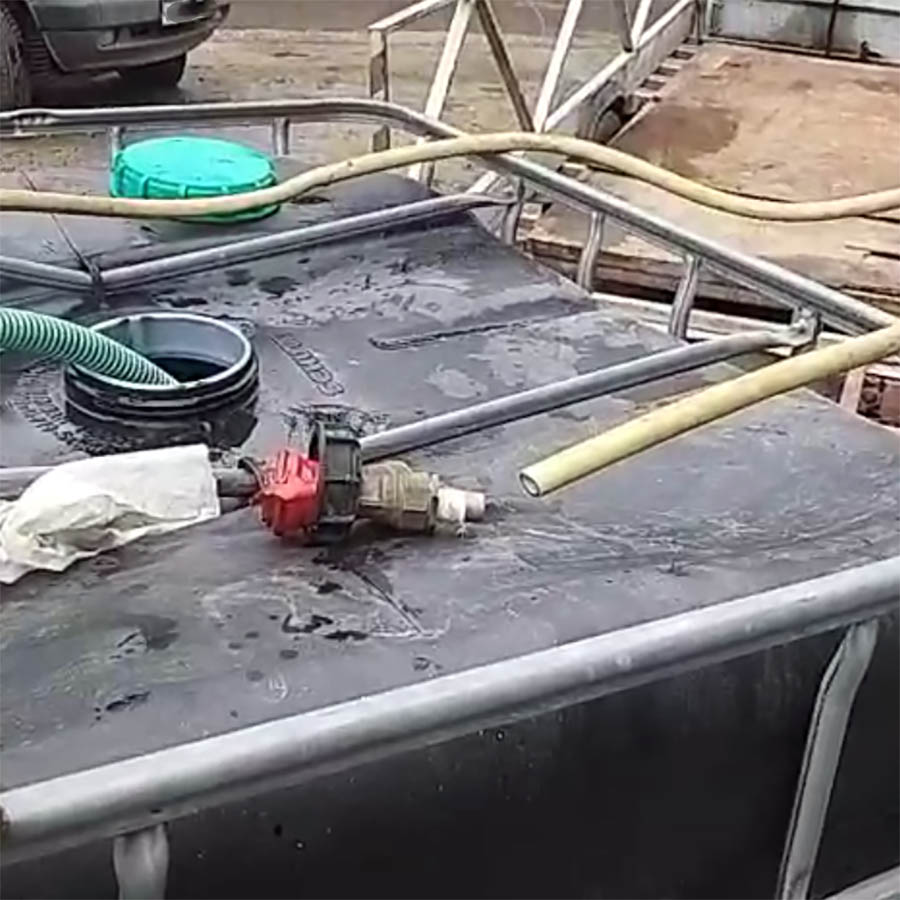
Preparing garden spray mixtures on site
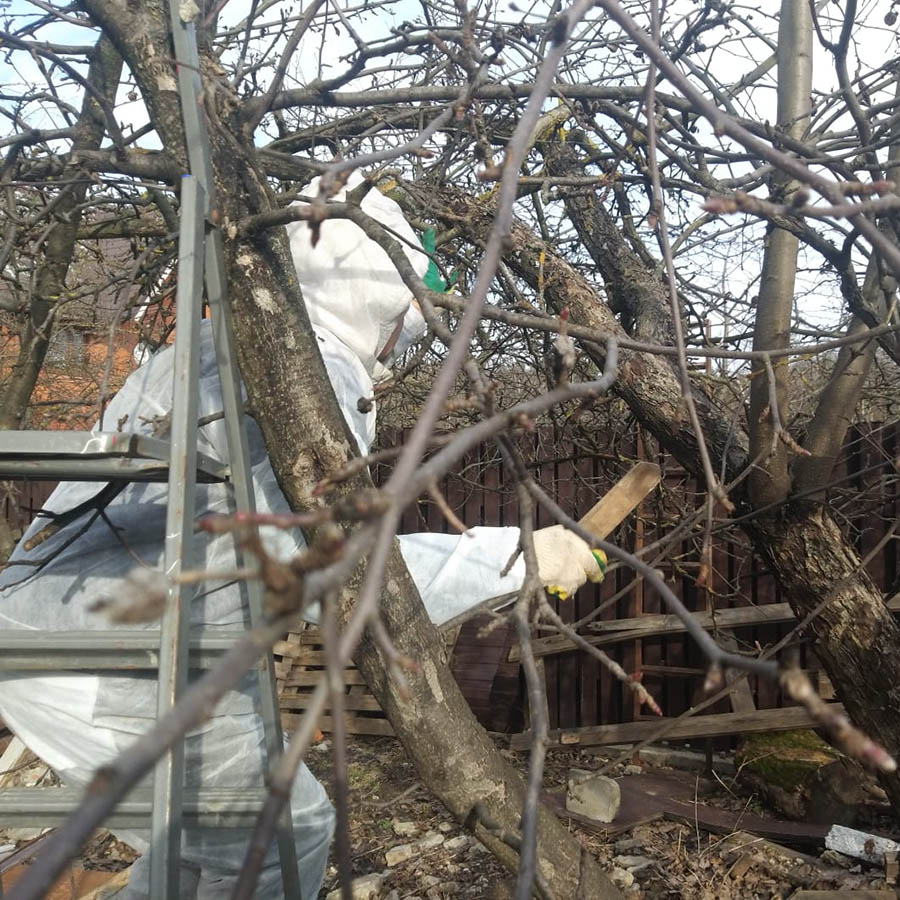
cleaning tree branches with a brush
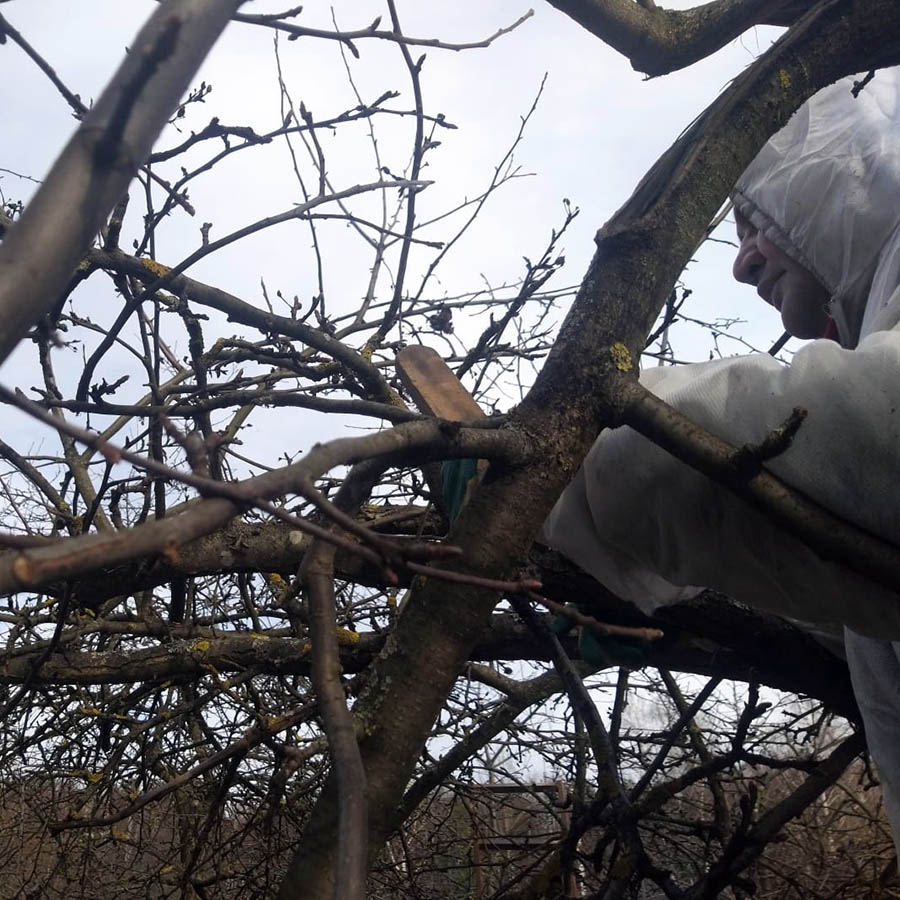
Cleaning old trees in the garden from moss and lichen
Spring tree treatment in the garden helps prepare trees for active growth and fruiting while preventing and treating diseases. In neglected gardens without treatment, harvests gradually decline because modern tree varieties require treatment with fungicides and insecticides. Older, disease-resistant tree varieties may still produce pest-damaged fruit without treatment.
Spring tree treatment against diseases and pests strengthens plant immunity and conserves resources for fruit production instead of fighting diseases and pests.
Sanitary pruning of trees and shrubs is done early in spring before buds swell and sap flow begins when the daily temperature averages up to +5°C in April.
Sanitary pruning removes all damaged and non-viable branches. It also protects against diseases and pests. Removing dried and infected branches improves crown transparency and eliminates pest larvae.
Pruning directs energy to new shoot growth and flowering, enhances light penetration and crown ventilation, and provides some protection against fungal infections and mold.
During sanitary pruning, we remove:
We use professional sharp and disinfected gardening tools: secateurs for thin branches, pruning shears, and saws for thick branches.
Sanitary pruning is done to live wood, and we know how to do it properly, sealing cuts with garden pitch. All fallen leaves and cut branches must be removed or burned in a safe place. Dried fruits and all plant debris should also be cleared.
Lime whitewashing protects against sunburn when the sun is bright, temperatures are high, and the soil is cold. Whitewashing protects against temperature fluctuations and slightly hinders insect movement.
Whitewashing helps eliminate pests like aphids, leaf rollers, scale insects, moths, and mites.
Trunks are whitewashed up to 1–1.5 meters high in March or April before sap flow begins. Lime or special acrylic whitewash is applied with a brush or roller to trunks and lower branches.
The whitewash mixture is about a 20% chalk suspension with lime in water—around 2 kg per bucket. Ready-made whitewash products available in stores can also be used.
Spraying is the main measure for protecting gardens from diseases and pests. This process should be done four times because wind can bring insects and fungal spores from neighboring areas after the first treatment.
Spraying should start in early spring before pests spread throughout the garden. Various products can be used, such as Bordeaux mixture, copper sulfate, and insecticide solutions.
First spraying—before bud break. Done in late March or April, depending on climate, when the average temperature is +5°C. At this stage, stronger treatments can be used since vegetation has not yet begun.
Second spraying — “green cone stage” when buds start growing. Done 3-4 weeks after the first spraying, in late April or early May, to eliminate pests that damage buds and flowers and their larvae and fungal spores.
Third spraying—”pink bud stage” when flower buds start opening. Protects buds from pests. Use insecticides like “Aktara,” “Inta-Vir,” “Decis,” and fungicides like “Chorus” and “Fufanon” to prevent moniliosis and other fungal infections. Also, control bud-attacking pests like weevils.
Fourth spraying—”post-flowering,” immediately after petals fall. Suitable products include 1% Bordeaux mixture, insecticides, and fungicides like “Skor,” “Topaz,” and “Chorus.”
After flowering, trees are particularly vulnerable to fungal infections and pest invasions. Spraying helps protect plants from insects and fungi.
Order our garden treatment service. We provide pest protection—spraying, cleaning, pruning, and garden maintenance—early in spring and late in autumn. Cost starts from $350 per day plus a call-out fee of $60.
Spring tree and shrub treatment is the key to a healthy garden and good harvests.